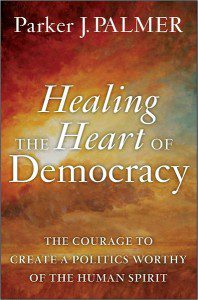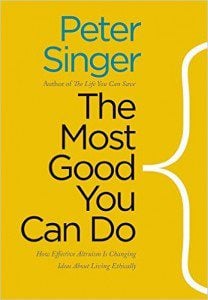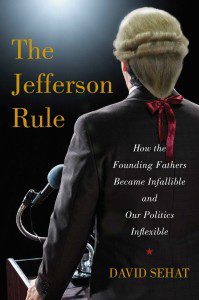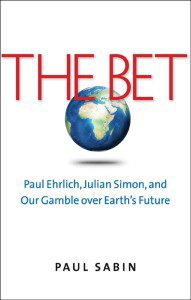“There are two ways for the heart to break: apart into many shards like a fragment grenade, or open into greater  capacity so we can hold life’s inevitable tensions creatively, not destructively.” These words from educator and activist Parker Palmer point us toward a vision that he calls the “politics of the broken hearted.” Palmer continues:
capacity so we can hold life’s inevitable tensions creatively, not destructively.” These words from educator and activist Parker Palmer point us toward a vision that he calls the “politics of the broken hearted.” Palmer continues:
When we hold…tensions and we don’t know how to hold them, the heart explodes like a hand grenade. And we sometimes want to throw that hand grenade at the enemy…. But a new habit of the heart would allow us to take that broken-hearted experience in a new direction, not toward the shattering into a million pieces but toward a heart that grows larger, more capacious, more open to hold both the suffering and the pain of the world.
Within us is a yearning for something better than divisiveness, toxicity, passivity, powerlessness, and selling our democratic inheritance to the highest bidder. Within us is the courage to pursue that yearning, to hold life’s tensions consciously, faithfully, and well, until they break us open.
On Friday, I know that many of you shared my experience of feeling your heart breaking open in grief when you first heard that a gunman had killed 26 people, 20 of them children, in a shooting at an elementary school in Newtown, Connecticut. This senseless slaughter is the second deadliest shooting in U.S. history, after the 2007 massacre at Virginia Tech, which claimed 32 lives.
But this week’s tragedy was even more wrenching for many people because, in the words of President Obama:
The majority of those who died…were children, beautiful little kids…. They had their entire lives ahead of them: birthdays, graduations, weddings, kids of their own. Among the fallen were also teachers — men and women who devoted their lives to helping our children fulfill their dreams.
As I learned more about the story, I couldn’t help thinking, “What if the victim had been my niece, my nephew, my cousin, my godchild?” I know some of you similarly thought, “What if the victim had been my child or grandchild?” And even as I felt my heart breaking open in grief, I also felt my heart breaking apart into shrapnel: into anger aimed at the shooter, at our culture of violence, at the NRA, and at politicians, who don’t have the guts or integrity to stand up to gun lobbyists. And I began to see reflexive, entrenched debates begin to play out across social media and on TV about why either more guns or less guns are the best response. Many of these debates suffer from misinformation, but polemical debates on Facebook are often far too similar to the debates on our national stage.
Only a few months ago on October 16, President Barack Obama and former Governor Mitt Romney took the stage at Hofstra University in Hempstead, New York for the Second Presidential Debate, moderated by Candy Crowley. During that debate, Crowley asked the following question: “President Obama, during the Democratic National Convention in 2008, you stated you wanted to keep AK-47s out of the hands of criminals. What has your administration done or planned to do to limit the availability of assault weapons?” President Obama began his response by saying, “We’re a nation that believes in the Second Amendment, and I believe in the Second Amendment. We’ve got a long tradition of hunting and sportsmen and people who want to make sure they can protect themselves. But there have been too many instances during the course of my presidency, where I’ve had to comfort families who have lost somebody. Most recently out in Aurora.” The President continued at length, but the gist was his recommendation that we should double-down on the status quo (“we have to enforce the laws we’ve already got”), although at one point, he did admirably say, “weapons that were designed for soldiers in war theaters don’t belong on our streets.” He also importantly emphasized that, “in my home town of Chicago, there’s an awful lot of violence and they’re not using AK-47s. They’re using cheap hand guns.”
The president is right to point out that mass shootings such as in Aurora, Colorado or Newtown, Connecticut are still the exception in the U.S., and we need to address all forms of gun violence, but I want to return to the first two sentences of his response. Keep in mind that the president is a former Constitutional law professor at the University of Chicago. So he knows more about the Constitution than I will likely ever know. But he is doing this country a disservice when he seeks to score cheap political points by trafficking in Constitutional canards.
Listen again to his two opening sentences: “We’re a nation that believes in the Second Amendment, and I believe in the Second Amendment. We’ve got a long tradition of hunting and sportsmen and people who want to make sure they can protect themselves.” I agree with the president that we have traditions of hunting and self-protection in this country, but the Second Amendment doesn’t have anything to say for or against hunting or self-protection. As Garry Wills has written, “To bear arms is, in itself, a military term. One does not bear arms against a rabbit” The Second Amendment is about a well-regulated militia — not hunting or self-defense. Those traditions are important, but they distract from what should be the core Constitutional question at hand.
President Obama is no doubt much more aware of the subtleties here than I am, but during that Second Presidential Debate he was much more concerned about getting reelected than he was in exploring the intricacies of Constitutional law. But just as that debate didn’t seem like the right time to have an honest, above board, nuanced conversation about the Constitution, there also never seems to be the right time to have a National Conversation about Gun Violence. And frankly, we need move from gun conversations to gun legislation.
Those of you who follow the Supreme Court likely remember the landmark case “District of Columbia v. Heller,” which, “decided for the first time in the nation’s history that the Second Amendment guarantees an individual’s right to own a gun for self-defense. The court’s landmark 5 to 4 decision split along ideological grounds and wiped away years of lower court decisions that had held that the intent of the amendment, ratified more than 200 years ago, was to tie the right of gun possession to militia service.” This ideologically driven interpretation of the Second Amendment was made a mere four years ago in 2008. As Justice John Paul Stevens wrote in a 46-page dissent, “When each word in the text is given full effect, the Amendment is most naturally read to secure to the people a right to use and possess arms in conjunction with service in a well-regulated militia. No more than that.” Notice also that the modifier well-regulated is in the text of the Second Amendment!
To look briefly at the history of how we arrived at our current impasse, it’s important to note that in stark contrast to the National Rifle Association’s current incarnation, the NRA “supported the 1934 National Firearms Act — the first major federal gun-control legislation — and the 1938 Federal Firearms Act, which together created a licensing system for dealers and prohibitively taxed the private ownership of automatic weapons (‘machine guns’).” And in 1939, the United States Supreme Court unanimously upheld the constitutionality of the 1934 National Firearms Act in the case “U.S. v. Miller.”
A shift came in the 1970s. The NRA’s motto changed from “Firearms Safety Education, Marksmanship Training, Shooting for Recreation” to “The Right of the People to Keep and Bear Arms Shall Not Be Infringed.” But this new motto is a manipulative prooftext. It only quotes the second half of the Second Amendment, omitting the crucial first half the gives the rightful context: “A well regulated militia being necessary to the security of a free state.” Around this period, the NRA began advancing “the rights of citizens . . . to keep and bear arms under the Second Amendment,” divorced from the historical context of a militia. And scholars have shown that,
at least sixteen of the twenty-seven law-review articles published between 1970 and 1989 that were favorable to the N.R.A.’s interpretation of the Second Amendment were “written by lawyers who had been directly employed by or represented the N.R.A. or other gun-rights organizations.” In [a 1991] interview, former Chief Justice Warren Burger [a 1969 Nixon appointee to the high court] said that the new interpretation of the Second Amendment was “one of the greatest pieces of fraud, I repeat the word ‘fraud,’ on the American public by special-interest groups that I have ever seen in my lifetime.”
So, I would argue that at least one important way forward is to press for a sane interpretation of the Second Amendment that corrects the 2008, 5-4 ruling in “District of Columbia v. Heller.” Even the Supreme Court sometimes gets it wrong: corporations are not people, and the Second Amendment is not about hunting and handguns. We need to move toward a middle-ground of responsible gun regulation.
And in addition to the historical context about the Second Amendment’s grounding in a well-regulated militia, there is also important sociological data that should inform how we move forward in response to gun violence. First, although the U.S. continues to have a significantly higher overall rate of “deaths due to assault” compared to other developed countries, we also have a decades-long decrease in assault deaths within the U.S. The annual rates of assault deaths peaked in our country in the late 1970s, and are now down to early 1960s levels. As political scientist Patrick Egan notes, “In the early 1980s, almost half of Americans told the General Social Survey (GSS) they were “afraid to walk alone at night” in their own neighborhoods; now only one-third feel this way.” Thus, despite the fact that five of the deadliest shootings in the U.S. history have all happened since 2007, the overall decades-long decline in assault deaths helps explain why there is not broader public support for gun control.
That being said, an important trend that may make gun control legislation more viable in the long-term is that — despite the high overall amounts of guns in the U.S. compared to other countries — “ownership of firearms is at or near all-time lows [in the U.S.]. Since 1973, the General Social Survey has been asking Americans whether they keep a gun in their home. In the 1970s, about half of the nation said yes; today only about one-third do.” As less Americans own guns, we may see a corresponding decline in the NRA’s power and influence.
Of course, not all the data is counterintuitive. Many pundits on Friday noted the parallel story to Newtown on the other side of the world: “Knife attack at Chinese school wounds 22 children.” Although tragic, there were no casualties in this knife attack, and their parents can still hug them at night. All 22 of those children might well be dead if the assailant had access to a gun. So it is significant to note that studies do show that, “More guns tend to mean more homicide” and “States with stricter gun control laws have fewer deaths from gun-related violence.”
But despite all these facts, a large part of the political impasse is that politicians know that, “Gun control, in general, has not been politically popular.” And whether we like it or not, if we are serious about changing our culture of violence, we need to take seriously that polls taken before and after the tragedies in Aurora, Tucson, and Virginia Tech that, “Shootings don’t tend to substantially affect views on gun control.” This lack of shift in public opinion is perhaps, again, because overall levels of violence remain dramatically down compared to recent decades in our U.S. history.
That being said, here’s a crucial point that may indicate our most realistic way forward: “particular policies to control guns often are [popular].” A complete ban on guns is very unpopular with the American public, but background checks, gun registrations, and bans on guns for felons and the mentally ill are robustly supported. A majority of the population also supports a ban on semi-automatic weapons and high-capacity clips.
So there is reason for hope. And speaking for myself as well as many others that I have talked to in the past few days, the mass murder of so many children is heartbreaking for me on an even more wrenching level than the many similar tragedies we have seen in recent years. But we as a nation seem to be addicted to guns and violence. And even with the slaughter of innocents in Newtown, it is still far from clear whether we have hit bottom as a nation regarding our capacity to witness repeated mass killings without making systemic change. One definition of insanity is to keep doing things the same way and expect a different result. But I do have some hope that this latest case of gun violence could galvanize change in a way that wasn’t possible before. Perhaps the tragic loss of so many defenseless children will break hearts open in compassion instead of merely breaking our hearts apart.
Social activist Jim Wallis often says that you can spot a politician walking around Washington D.C., because most of them always have their finger in the air trying to figure out which way the wind of popular opinion is blowing, so that they can go that direction. And he cautions that, “you don’t change a society by merely replacing one politician with another. You change a society by changing the wind.”
My hope is that the wind is beginning to blow in the direction of gun regulation. There are gun rights and there are gun responsibilities. We can and must do better as a nation at balancing rights with responsibilities — for ourselves and for our children. And the recent victories for Immigration Reform and Marriage Equality both in the state of Maryland and around the country demonstrate that change is possible. We can change the wind, but it takes hard work.
Your position on gun control is ultimately up to the dictates of your conscience, but if you do feel led to get involved in making change, one place to begin to educate yourself about how to make a difference is the website of the Brady Campaign (bradycampaign.org), the namesake of James Brady, who was permanently disabled and almost killed in the 1981 armed assassination attempt on President Reagan. The assailant had a history of mental illness and had bought the pistol used in the attack in a pawn shop. For decades now, the Brady Campaign has worked to introduce and encourage the enforcement of legislation to prevent gun violence in our country. And in the wake of the recent movie theater shooting in Colorado, it launched a campaign called “We Are Better Than This” (wearebetterthanthis.org) to foster a meaningful national conversation on how to prevent tragedies like the one that occurred in Aurora. Today the need for that conversation is even more stark, and the Brady Campaign has already laid some of the necessary groundwork.
A vital part of that national conversation also needs to be about a path toward easily accessible treatment for mental illness. At the same time, I think that The New York Times columnist Nicholas Kristof is right that,
The fundamental reason kids are dying in massacres like this one is not that we have lunatics or criminals — all countries have them — but that we suffer from a political failure to regulate guns. Children ages 5 to 14 in America are 13 times as likely to be murdered with guns as children in other industrialized countries. More Americans die in gun homicides and suicides in six months than have died in the last 25 years in every terrorist attack and the wars in Afghanistan and Iraq combined.
We have misplaced priorities in this country that must change, but organizations such as the Brady Campaign have been unable to create the political will for change on their own. It, and organizations like it, need our help. And I encourage you to consider working through the Brady Campaign or similar efforts to make a systemic change in our country regarding gun regulation.
But even as we work to change our culture of violence, the individual level matters too. Be sure also in this season to take some time to hug or phone your loved ones. Savor each present moment. Be gentle with yourselves, and take care of one another.
As this post ends, I invite you to consider again to these words adapted from Parker Palmer:
Within us is a yearning for something better than divisiveness, toxicity, passivity, powerlessness, and selling our democratic inheritance to the highest bidder. Within us is the courage to pursue that yearning, to hold life’s tensions consciously, faithfully, and well, until they break us open. May we find a way to live together into a new habit of the heart will allow us to take that broken-hearted experience in a new direction, not toward the shattering into a million pieces but toward a heart that grows larger, more capacious, more open to hold both the world’s suffering and pain and the world’s hope and joy.
May your heart be broken open. May we together find our way to a politics of the brokenhearted.
Resources
- Helping your children manage distress in the aftermath of a shooting (from the American Psychological Association), available at http://www.apa.org/helpcenter/aftermath.aspx.
- Trauma Response Resources for Families and Congregations (from the Unitarian Universalist Association), available at http://www.uua.org/safe/response/117164.shtml.
- Tips for Talking to Children About the Shooting (from The New York Times), available at http://www.nytimes.com/2012/12/15/health/tips-for-talking-to-children-about-the-elementary-school-mass-shooting.html.
For Further Reading
- Adam Winkler, Gunfight: The Battle over the Right to Bear Arms in America:
Winkler uses the landmark 2008 case “District of Columbia v. Heller,” which invalidated a law banning handguns in the nation’s capital, as a springboard for a groundbreaking historical narrative. From the Founding Fathers and the Second Amendment to the origins of the Klan, ironically as a gun control organization, the debate over guns has always generated controversy. Whether examining the Black Panthers’ role in provoking the modern gun rights movement or Ronald Reagan’s efforts to curtail gun ownership, Winkler brilliantly weaves together the dramatic stories of gun rights advocates and gun control lobbyists, providing often unexpected insights into the venomous debate that now cleaves our nation.
- David Hemenway, Private Guns, Public Health: “The public health community began researching gun violence about two decades ago, a late entrant in a field traditionally occupied by criminologists. David Hemenway, an economist at the Harvard School of Public Health and the director of the Injury Control Research Center there, has been a leader in this effort.”
Notes
1 For a poem written to “find the words” about the unspeakeable in the aftermath of the Virginia Tech shootings, see Bob Hicok, “In the Loop,” Poetry (February 2010), available at http://www.poetryfoundation.org/poetrymagazine/poem/238616.
2 “there are two ways for the heart to break” — Parker Palmer, “Hearts Broken Open,” available at http://www.couragerenewal.org/podcast.
3 “When we hold these tensions and we don’t know how to hold them” — Parker Palmer interview with Bill Moyers (February 20, 2009), available at http://www.pbs.org/moyers/journal/02202009/transcript2.html.
4 “Within us is a yearning for something better than divisiveness” — Parker Palmer, Healing the Heart of Democracy: The Courage to Create a Politics Worthy of the Human Spirit, 23.
5 James Barron, “Nation Reels After Gunman Massacres 20 Children at School in Connecticut” (December 14, 2012), available at http://www.nytimes.com/2012/12/15/nyregion/shooting-reported-at-connecticut-elementary-school.html?hp&_r=0&pagewanted=all. For a comparison to other mass shootings in the U.S, see http://www.nytimes.com/interactive/2012/12/14/nyregion/The-shooting-at-the-Sandy-Hook-Elementary.html?ref=nyregion.
6 “Video and Transcript: Obama on Newtown Shooting,” available at http://blogs.wsj.com/washwire/2012/12/14/transcript-obamas-statement-on-newtown-shooting.
7 “October 16, 2012 Debate Transcript,” available at http://www.debates.org/index.php?page=october-1-2012-the-second-obama-romney-presidential-debate.
8 Garry Wills, “To Keep and Bear Arms,” The New York Review of Books (September 21, 1995). available at http://www.nybooks.com/articles/archives/1995/sep/21/to-keep-and-bear-arms/?pagination=false. This article is worth reading in full.
9 Quotes from and about the 2008 Supreme Court Case are drawn from Robert Barnes, “Justices Reject D.C. Ban On Handgun Ownership,” Washington Post (June 27, 2008), available athttp://www.washingtonpost.com/wp-dyn/content/article/2008/06/26/AR2008062600615.html?sid=ST2008070500624.
10 The twentieth-century history of gun control court cases and the NRA is drawn from Jill Lepore, “Battleground America: One nation, under the gun,” The New Yorker (April 23, 2012), available at http://www.newyorker.com/reporting/2012/04/23/120423fa_fact_lepore?currentPage=all. More:
Franklin Delano Roosevelt’s solicitor general, Robert H. Jackson, argued that the Second Amendment is “restricted to the keeping and bearing of arms by the people collectively for their common defense and security.” Furthermore, Jackson said, the language of the amendment makes clear that the right “is not one which may be utilized for private purposes but only one which exists where the arms are borne in the militia or some other military organization provided for by law and intended for the protection of the state.”
This article is worth reading in full.
11 “Corporations are not people” — a reference to the 2010 Supreme Court case “Citizens United v. Federal Election Commission.” For more, see
12 The sociological data is drawn from Ezra Klein, “Twelve facts about guns and mass shootings in the United States” (December 14, 2012), available at http://www.washingtonpost.com/blogs/wonkblog/wp/2012/12/14/nine-facts-about-guns-and-mass-shootings-in-the-united-states/. The article is worth reading in full, and the charts are helpful.
13 “The annual rates of assault deaths peaked” — see charts at http://www.kieranhealy.org/blog/archives/2012/07/20/america-is-a-violent-country/
14 “afraid to walk alone at night” — John Sides, “The Declining Culture of Guns and Violence in the United States” (July 21, 2012), available at http://themonkeycage.org/blog/2012/07/21/the-declining-culture-of-guns-and-violence-in-the-united-states.
15 “We may see a corresponding decline in the NRA’s power.” — Nate Cohn, “The Politics of Gun Control Have Changed, But Will Democrats Notice?” (December 14, 2012), available at http://www.tnr.com/blog/electionate/111151/could-newtown-change-gun-control-politics. As an initial sign of hope, “Sen. Dianne Feinstein To Introduce New Assault Weapons Ban,” available at http://www.huffingtonpost.com/2012/12/16/dianne-feinstein-assault-weapons-ban_n_2311477.html.
16 “Knife attack at Chinese school wounds 22 children” (December 14, 2012), available at http://www.cnn.com/2012/12/14/world/asia/china-knife-attack/index.html.
17 “particular policies to control guns often are [popular].” — Ezra Klein, “Twelve facts about guns and mass shootings in the United States” (December 14, 2012), available at http://www.washingtonpost.com/blogs/wonkblog/wp/2012/12/14/nine-facts-about-guns-and-mass-shootings-in-the-united-states/.
18 “addicted to guns and violence” — see Max Fisher, “What makes America’s gun culture totally unique in the world, in four charts” (December 15, 2012), available at http://www.washingtonpost.com/blogs/worldviews/wp/2012/12/15/what-makes-americas-gun-culture-totally-unique-in-the-world-as-demonstrated-in-four-charts/.
19 “hit bottom” — on the difficulty of passing gun control reform even in the wake of repeated gun violence on a mass scale, see Gregory Gibson, “Why America Lets the Killings Continue” The New York Times (December 14, 2012), available at http://www.nytimes.com/2012/12/14/opinion/why-we-let-the-school-shootings-continue.html..
20 Jim Wallis, God’s Politics: Why the Right Gets It Wrong and the Left Doesn’t Get It, 22.
21 “Mental Illness” — for one perspective among many, see “‘I Am Adam Lanza’s Mother’: A Mom’s Perspective On The Mental Illness Conversation In America,” available at http://www.huffingtonpost.com/2012/12/16/i-am-adam-lanzas-mother-mental-illness-conversation_n_2311009.html. On the complexity of understanding underlying causes, see Brad Plumer, “Why are mass shootings becoming more common?” The Washington Post (December 14, 2012), available at http://www.washingtonpost.com/blogs/wonkblog/wp/2012/12/14/why-are-mass-shootings-becoming-more-frequent.
22 Nicholas Kristof, “Do We Have the Courage to Stop This?” (December 15, 2012), available at http://www.nytimes.com/2012/12/16/opinion/sunday/kristof-do-we-have-the-courage-to-stop-this.html.
The Rev. Dr. Carl Gregg is a trained spiritual director, a D.Min. graduate of San Francisco Theological Seminary, and the minister of the Unitarian Universalist Congregation of Frederick, Maryland. Follow him on Facebook (facebook.com/carlgregg) and Twitter (@carlgregg) .
Learn more about Unitarian Universalism:
http://www.uua.org/beliefs/principles/index.shtml












